Our Schools
Fast food is a staple in many people’s diets, particularly children, due to its convenience and affordability. However, the ease of access and consumption of fast food often comes at a cost to children’s health. The negative effects of fast food on children’s health have been well documented, with studies linking it to obesity, type 2 diabetes, heart disease, and other health issues. In this article, we will discuss why fast food is harmful to children’s health and why it is essential to promote healthy eating habits.
Fast food is generally high in calories, fat, sugar, and salt, and lacks essential nutrients such as fiber, vitamins, and minerals. Children who consume fast food on a regular basis are more likely to exceed their daily recommended intake of calories and unhealthy fats, leading to weight gain and obesity. According to the World Health Organization (WHO), there has been a significant increase in childhood obesity worldwide, with an estimated 38 million children under the age of five being overweight or obese. This can lead to a range of health problems in childhood, such as high blood pressure, sleep apnea, and joint problems, and can increase the risk of developing chronic diseases in adulthood.
Fast food is also high in sugar, which can contribute to tooth decay and other health issues such as type 2 diabetes. A diet high in sugar can also affect a child’s cognitive function and ability to concentrate, which can impact their academic performance. Additionally, fast food is often low in fiber, which can lead to digestive problems and constipation.
Another problem with fast food is that it often contains large amounts of sodium, which can lead to high blood pressure and an increased risk of heart disease. According to the American Heart Association, children who consume too much sodium are at risk of developing hypertension, which can increase their risk of heart disease and stroke in adulthood.
Promoting healthy eating habits in children is essential to their overall health and well-being. Fruits, vegetables, whole grains, lean protein sources, and healthy fats should all be included in a healthy diet. Parents and educators can help promote healthy eating habits by encouraging children to eat a balanced diet, preparing healthy meals at home, and limiting their fast and junk food intake.
Conclusion:
In conclusion, fast food harms children’s health due to its high calorie, fat, sugar, and salt content, and lack of essential nutrients. Children who consume fast food on a regular basis are more likely to be overweight or obese and have an increased risk of developing chronic diseases such as type 2 diabetes and heart disease. Promoting healthy eating habits is essential to ensure children’s overall health and well-being, and to help them develop healthy habits that will benefit them throughout their lives. At Ekya Schools, we prioritize the importance of a healthy diet and encourage our students to make healthy food choices. We understand that healthy fast food options are available, but it is important for children to understand the difference between healthy food and fast food junk food. We believe in educating our students on the importance of making healthy choices when it comes to their diet, and we encourage parents to make healthy food choices for their children as well.
The Top 50 Free Educational Websites For Kids In (2023)
1. National Geographic Kids
 A website featuring articles, videos, and games on science, animals, and history.
A website featuring articles, videos, and games on science, animals, and history.
2. Funbrain

3. Khan Academy
 A website offering free online courses and lessons on various subjects, including math, science, and humanities.
A website offering free online courses and lessons on various subjects, including math, science, and humanities.
4. PBS Kids:
 A website featuring educational games, videos, and resources based on popular TV shows.
A website featuring educational games, videos, and resources based on popular TV shows.
5. Scholastic
 A website offering reading resources, activities, and games for kids of all ages.
A website offering reading resources, activities, and games for kids of all ages.
6. Smithsonian Learning Lab
 A website featuring resources on history, science, and culture from the Smithsonian Museum.
A website featuring resources on history, science, and culture from the Smithsonian Museum.
7. Starfall
 A website with interactive games and activities focused on reading and math.
A website with interactive games and activities focused on reading and math.
8. Code.org
 A website offering free coding courses and resources for kids of all ages.
A website offering free coding courses and resources for kids of all ages.
9. BrainPOP
 A website featuring animated educational videos on various subjects, including science, math, and history.
A website featuring animated educational videos on various subjects, including science, math, and history.
10. Duolingo
 A website offering free language learning courses for kids and adults.
A website offering free language learning courses for kids and adults.
11. NASA Kids Club
 A website with educational games, videos, and resources focused on space and astronomy.
A website with educational games, videos, and resources focused on space and astronomy.
12. Storyline Online
 A website featuring videos of celebrities reading children's books aloud.
A website featuring videos of celebrities reading children's books aloud.
13. Coolmath
 A website featuring educational games and activities focused on math.
A website featuring educational games and activities focused on math.
14. Highlights Kids:
 A website with educational games, articles, and resources for kids of all ages.
A website with educational games, articles, and resources for kids of all ages.
15. Kids Health
 A website with articles and resources focused on health and wellness for kids.
A website with articles and resources focused on health and wellness for kids.
16. The Magic School Bus
 A website featuring educational games and activities based on the popular TV show.
A website featuring educational games and activities based on the popular TV show.
17. BBC Bitesize
 A website featuring educational resources on various subjects, including math, science, and history.
A website featuring educational resources on various subjects, including math, science, and history.
18. HowStuffWorks
 A website featuring articles and resources on science and technology.
A website featuring articles and resources on science and technology.
19. Crash Course
 A website offering free educational videos on various subjects, including science, math, and humanities.
A website offering free educational videos on various subjects, including science, math, and humanities.
20. Make Me Genius
 A website featuring educational videos and resources on science for kids.
A website featuring educational videos and resources on science for kids.
21. NASA Space Place
 A website with educational games, videos, and resources focused on space and astronomy.
A website with educational games, videos, and resources focused on space and astronomy.
22. Exploratorium
 A website featuring educational resources on science and technology.
A website featuring educational resources on science and technology.
23. Education.com
 A website with educational resources, activities, and games for kids of all ages.
A website with educational resources, activities, and games for kids of all ages.
24. Wonderopolis
 A website featuring educational articles and resources on various subjects.
A website featuring educational articles and resources on various subjects.
25. CK-12
 A website featuring free online courses and resources on various subjects, including math, science, and humanities.
A website featuring free online courses and resources on various subjects, including math, science, and humanities.
26. CuriosityStream
 A website featuring educational videos and documentaries on various subjects.
A website featuring educational videos and documentaries on various subjects.
27. The Kids Should See This
 A website featuring educational videos on various subjects, including science, technology, and art.
A website featuring educational videos on various subjects, including science, technology, and art.
28. The Happy Scientist
 A website with educational videos and resources on science for kids.
A website with educational videos and resources on science for kids.
29. Smarter Every Day
 A website featuring educational videos on science and technology.
A website featuring educational videos on science and technology.
30. TED-Ed
 A website featuring educational videos and resources on various subjects.
A website featuring educational videos and resources on various subjects.
31. E-learning for Kids
 A website featuring free online courses and resources on various subjects, including math, science, and humanities.
A website featuring free online courses and resources on various subjects, including math, science, and humanities.
32. National Gallery of Art
 A website featuring educational resources and activities focused on art.
A website featuring educational resources and activities focused on art.
33. Open Culture
 A website featuring educational resources, courses, and videos on various subjects.
A website featuring educational resources, courses, and videos on various subjects.
34. The New York Times Learning Network
 A website featuring educational resources and activities based on the news.
A website featuring educational resources and activities based on the news.
35. Academic Earth
 Provides free online courses and lectures from top universities around the world.
Provides free online courses and lectures from top universities around the world.
36. ReadWriteThink
 Provides free resources for literacy instruction, including lesson plans and interactive activities.
Provides free resources for literacy instruction, including lesson plans and interactive activities.
37. Kids Know It
 Provides free educational resources, including games, videos, and activities for kids in grades K-8.
Provides free educational resources, including games, videos, and activities for kids in grades K-8.
38. Big History Project
 Provides free educational resources about history and science for high school students.
Provides free educational resources about history and science for high school students.
39. Funology
 Features science experiments, magic tricks, crafts, and more for kids.
Features science experiments, magic tricks, crafts, and more for kids.
40. Math Playground
 Provides free math games, logic puzzles, and math videos for kids in grades 1-6.
Provides free math games, logic puzzles, and math videos for kids in grades 1-6.
41. Scholastic Learn at Home
 Provides educational resources for kids in grades K-9, including lesson plans, activities, and videos.
Provides educational resources for kids in grades K-9, including lesson plans, activities, and videos.
42. Animal Planet
 Provides educational resources about animals and wildlife, including videos, articles, and games.
Provides educational resources about animals and wildlife, including videos, articles, and games.
43. Scratch
 Enables children to generate their personalized interactive narratives, games, and animated creations.
Enables children to generate their personalized interactive narratives, games, and animated creations.
44. History for Kids
 Offers engaging articles and videos about history, science, and geography for kids.
Offers engaging articles and videos about history, science, and geography for kids.
45. GoNoodle
 GoNoodle is a website dedicated to promoting an active and healthy lifestyle for kids and families through free games, printable activities, and video tutorials. The site offers a wide range of movement and exercise activities, including dance and sports-based movement games.
GoNoodle is a website dedicated to promoting an active and healthy lifestyle for kids and families through free games, printable activities, and video tutorials. The site offers a wide range of movement and exercise activities, including dance and sports-based movement games.
46. A Book in Time
 A Book in Time is a website that offers curated history lessons, videos, and interactive resources for kids. They include links to engaging activities within their child-friendly articles. While some links may not work due to the expiration of Adobe Flash support in 2020, the resources for history crafts and activities are still functional.
A Book in Time is a website that offers curated history lessons, videos, and interactive resources for kids. They include links to engaging activities within their child-friendly articles. While some links may not work due to the expiration of Adobe Flash support in 2020, the resources for history crafts and activities are still functional.
47. Mystery Science
 Mystery Science provides quick lessons on science, technology, and nature to enhance student learning outcomes. The site offers lessons on engineering, biology, material science, and climate patterns for children to explore on their smartphones and tablets.
Mystery Science provides quick lessons on science, technology, and nature to enhance student learning outcomes. The site offers lessons on engineering, biology, material science, and climate patterns for children to explore on their smartphones and tablets.
48. Curios World
 Curios World focuses on platform-centric learning across eight important lesson areas, providing an academically aligned learning experience for kids through cooking, crafting, immersive play, and science experiments. This website provides a highly interactive learning experience for elementary students, incorporating game elements to make learning more engaging.
Curios World focuses on platform-centric learning across eight important lesson areas, providing an academically aligned learning experience for kids through cooking, crafting, immersive play, and science experiments. This website provides a highly interactive learning experience for elementary students, incorporating game elements to make learning more engaging.
49. Time for Kids
 Time for Kids is a unique news platform that provides kids with news from around the world tailored to their academic level. The content of the news shared is tailored according to the grade selected, with customized language and context. The site also offers a Spanish language option, with an audible read-aloud feature for kids who prefer auditory learning.
Time for Kids is a unique news platform that provides kids with news from around the world tailored to their academic level. The content of the news shared is tailored according to the grade selected, with customized language and context. The site also offers a Spanish language option, with an audible read-aloud feature for kids who prefer auditory learning.
50. Ology
 Ology is an educational website that emphasizes visual learning for science and technology subjects. It covers exciting fields like zoology, microbiology, archaeology, and others, offering free courses and games for kids.
Conclusion
These are just a few examples of the many excellent educational websites available for kids in 2023. Using these websites, students can supplement their classroom learning and engage in interactive and fun activities to help them grow and learn.
At Ekya Schools, we encourage our students to take advantage of these resources and explore their interests outside of the classroom. We believe that by providing children with access to the best educational websites available, we can help them achieve their full potential and become lifelong learners.
Ology is an educational website that emphasizes visual learning for science and technology subjects. It covers exciting fields like zoology, microbiology, archaeology, and others, offering free courses and games for kids.
Conclusion
These are just a few examples of the many excellent educational websites available for kids in 2023. Using these websites, students can supplement their classroom learning and engage in interactive and fun activities to help them grow and learn.
At Ekya Schools, we encourage our students to take advantage of these resources and explore their interests outside of the classroom. We believe that by providing children with access to the best educational websites available, we can help them achieve their full potential and become lifelong learners.
56 Names of Shapes with Pictures
Why Teaching Shapes is Crucial for Early Childhood Development?
 Shapes are all around us, and teaching shapes is essential for several reasons. Here are some of the reasons why teaching shapes is so important:
Developing Spatial Awareness:
Shapes are all around us, and teaching shapes is essential for several reasons. Here are some of the reasons why teaching shapes is so important:
Developing Spatial Awareness:
 Shapes are the foundation for spatial awareness, which is the ability to understand and navigate the physical world around us. By learning shapes, children develop spatial skills that help them understand how objects relate to one another in space. This is a critical skill that helps children navigate their environment, solve problems, and succeed in math and science.
Improving Visual Perception:
Shapes are the foundation for spatial awareness, which is the ability to understand and navigate the physical world around us. By learning shapes, children develop spatial skills that help them understand how objects relate to one another in space. This is a critical skill that helps children navigate their environment, solve problems, and succeed in math and science.
Improving Visual Perception:
 Identifying shapes requires visual perception skills, which are essential for reading, writing, and many other activities. By learning to identify and distinguish shapes, children improve their visual perception skills, which helps them learn to recognize letters, numbers, and other symbols.
Enhancing Cognitive Development:
Identifying shapes requires visual perception skills, which are essential for reading, writing, and many other activities. By learning to identify and distinguish shapes, children improve their visual perception skills, which helps them learn to recognize letters, numbers, and other symbols.
Enhancing Cognitive Development:
 Learning shapes also helps children develop their cognitive skills, including memory, attention, and problem-solving. By recognizing shapes, children learn to categorize objects based on their properties, which enhances their ability to think logically and critically.
Preparing for Math:
Learning shapes also helps children develop their cognitive skills, including memory, attention, and problem-solving. By recognizing shapes, children learn to categorize objects based on their properties, which enhances their ability to think logically and critically.
Preparing for Math:
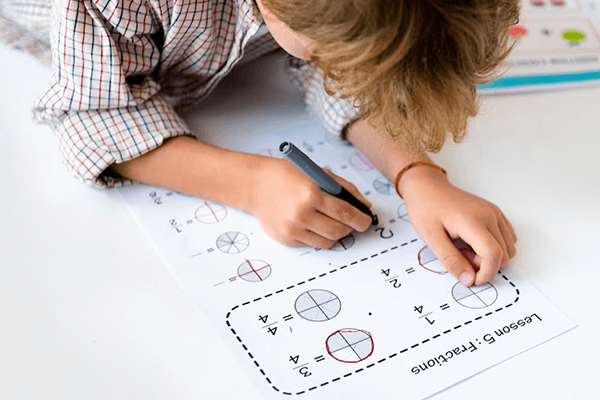 Shapes are an essential part of math, and understanding shapes is crucial for success in math. By learning shapes, children develop a foundation for understanding geometry and other mathematical concepts. They also learn to calculate the area, perimeter, and volume of shapes, which are fundamental skills for solving math problems.
Boosting Creativity:
Shapes are an essential part of math, and understanding shapes is crucial for success in math. By learning shapes, children develop a foundation for understanding geometry and other mathematical concepts. They also learn to calculate the area, perimeter, and volume of shapes, which are fundamental skills for solving math problems.
Boosting Creativity:
 Shapes are a fundamental component of art and design. By learning shapes, children develop their creativity and imagination. They learn to identify shapes in the world around them and use them in their artwork and design projects.
In this guide, we will cover a wide range of shapes, including basic shapes like circles, squares, and triangles, as well as more complex shapes like polygons, quadrilaterals, and three-dimensional shapes. We will also discuss the names of shapes and their significance in math, science, and other fields.
Shapes are a fundamental component of art and design. By learning shapes, children develop their creativity and imagination. They learn to identify shapes in the world around them and use them in their artwork and design projects.
In this guide, we will cover a wide range of shapes, including basic shapes like circles, squares, and triangles, as well as more complex shapes like polygons, quadrilaterals, and three-dimensional shapes. We will also discuss the names of shapes and their significance in math, science, and other fields.
56+ Shapes You Need to Know with Pictures:
- Square:
 A square is a type of geometric shape that has four equal sides and four right angles. It is a regular polygon, which means that all of its sides are of the same length and its interior angles are all equal to 90 degrees.
A square is a type of geometric shape that has four equal sides and four right angles. It is a regular polygon, which means that all of its sides are of the same length and its interior angles are all equal to 90 degrees.
- Circle:
 A circle is a two-dimensional geometric shape consisting of all the points in a plane that are equidistant from a given point called the center. It is a closed curve with a circumference that is the same distance from the center at any point.
A circle is a two-dimensional geometric shape consisting of all the points in a plane that are equidistant from a given point called the center. It is a closed curve with a circumference that is the same distance from the center at any point.
- Rectangle:
 A rectangle is a four-sided polygon with two pairs of parallel sides and four right angles (90 degrees each). It is a type of quadrilateral and a parallelogram, with opposite sides that are congruent and parallel to each other.
A rectangle is a four-sided polygon with two pairs of parallel sides and four right angles (90 degrees each). It is a type of quadrilateral and a parallelogram, with opposite sides that are congruent and parallel to each other.
- Triangle
 A three-sided polygon is known as a triangle. It has three internal angles, and the sum of these angles is always 180 degrees. It is a fundamental shape in geometry, often used to model real-world objects such as pyramids, roofs, and traffic signs. Triangles can be classified by the length of their sides (equilateral, isosceles, or scalene) or by the measure of their angles (acute, right, or obtuse).
A three-sided polygon is known as a triangle. It has three internal angles, and the sum of these angles is always 180 degrees. It is a fundamental shape in geometry, often used to model real-world objects such as pyramids, roofs, and traffic signs. Triangles can be classified by the length of their sides (equilateral, isosceles, or scalene) or by the measure of their angles (acute, right, or obtuse).
- Oval
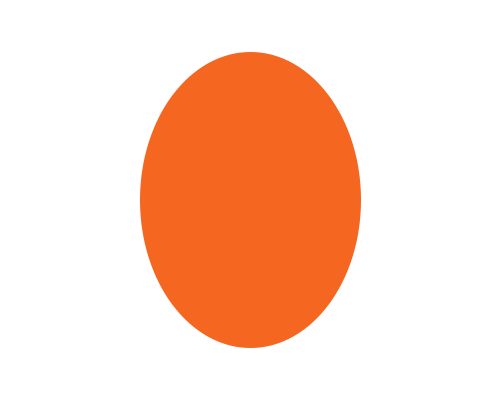 An oval is a two-dimensional shape that is similar to a circle, but elongated in one direction. It has a curved outline, with no straight sides or corners, and two equal and opposite axes of symmetry.
An oval is a two-dimensional shape that is similar to a circle, but elongated in one direction. It has a curved outline, with no straight sides or corners, and two equal and opposite axes of symmetry.
- Pentagon
 A pentagon is a five-sided polygon with five angles that add up to 540 degrees. It is a type of irregular polygon, where each side may have a different length and each angle may have a different measure.
A pentagon is a five-sided polygon with five angles that add up to 540 degrees. It is a type of irregular polygon, where each side may have a different length and each angle may have a different measure.
- Hexagon
 A hexagon is a six-sided polygon with six angles that add up to 720 degrees. It is a type of regular polygon, where all six sides have the same length and all six angles have the same measure (120 degrees).
A hexagon is a six-sided polygon with six angles that add up to 720 degrees. It is a type of regular polygon, where all six sides have the same length and all six angles have the same measure (120 degrees).
- Heptagon
 A heptagon is a seven-sided polygon with seven angles that add up to 900 degrees. It is a type of irregular polygon, where each side may have a different length and each angle may have a different measure.
A heptagon is a seven-sided polygon with seven angles that add up to 900 degrees. It is a type of irregular polygon, where each side may have a different length and each angle may have a different measure.
- Octagon
 An octagon is an eight-sided polygon with eight angles that add up to 1080 degrees. It is a type of regular polygon, where all eight sides have the same length and all eight angles have the same measure (135 degrees).
An octagon is an eight-sided polygon with eight angles that add up to 1080 degrees. It is a type of regular polygon, where all eight sides have the same length and all eight angles have the same measure (135 degrees).
- Nonagon
 A polygon with nine sides is called a nonagon, and it has nine internal angles with a total sum of 1260 degrees. It is a type of irregular polygon, where each side may have a different length and each angle may have a different measure.
A polygon with nine sides is called a nonagon, and it has nine internal angles with a total sum of 1260 degrees. It is a type of irregular polygon, where each side may have a different length and each angle may have a different measure.
- Decagon
 A decagon is a ten-sided polygon with ten angles that add up to 1440 degrees. It is a type of regular polygon, where all ten sides have the same length and all ten angles have the same measure (144 degrees).
A decagon is a ten-sided polygon with ten angles that add up to 1440 degrees. It is a type of regular polygon, where all ten sides have the same length and all ten angles have the same measure (144 degrees).
- Sphere
 A sphere is a 3D object with a perfectly round shape. It consists of all points in space that are equidistant from a fixed point, known as the center. The surface of a sphere is called a spherical surface, and its properties are studied in geometry and math.
A sphere is a 3D object with a perfectly round shape. It consists of all points in space that are equidistant from a fixed point, known as the center. The surface of a sphere is called a spherical surface, and its properties are studied in geometry and math.
- Cube
 A cube is a geometric solid with six square faces, twelve edges, and eight vertices. It is a regular solid object, which means that all its faces, edges, and vertices are equal in size and shape.
A cube is a geometric solid with six square faces, twelve edges, and eight vertices. It is a regular solid object, which means that all its faces, edges, and vertices are equal in size and shape.
- Cone
 A cone is a three-dimensional geometric shape that has a circular base and a curved surface that narrows gradually and smoothly towards a point, which is called the apex. It is a geometric shape that is used to model real-world objects such as ice cream cones and traffic cones.
A cone is a three-dimensional geometric shape that has a circular base and a curved surface that narrows gradually and smoothly towards a point, which is called the apex. It is a geometric shape that is used to model real-world objects such as ice cream cones and traffic cones.
- Cuboid
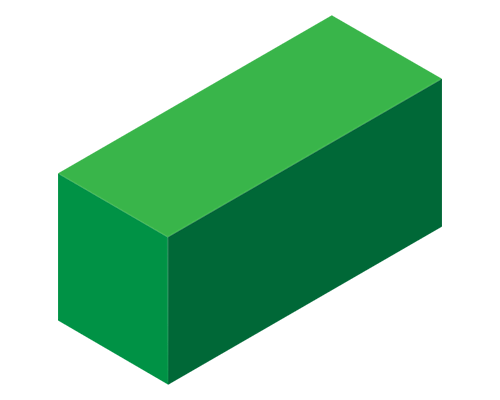 A cuboid is a three-dimensional solid shape that is characterized by six rectangular faces, each of which meets at right angles. It is also called a rectangular prism. A cuboid is used to model real-world objects such as shoeboxes, books, and television sets.
A cuboid is a three-dimensional solid shape that is characterized by six rectangular faces, each of which meets at right angles. It is also called a rectangular prism. A cuboid is used to model real-world objects such as shoeboxes, books, and television sets.
- Cylinder
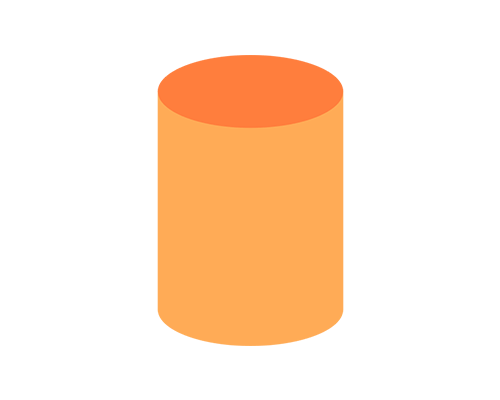 A cylinder is a three-dimensional geometric shape that has two identical circular bases and a curved surface that connects the two bases.
A cylinder is a three-dimensional geometric shape that has two identical circular bases and a curved surface that connects the two bases.
- Pyramid
 A pyramid is a three-dimensional shape with a polygonal base and triangular faces that connect at a central point or vertex. A pyramid takes its name from the shape of its base.
A pyramid is a three-dimensional shape with a polygonal base and triangular faces that connect at a central point or vertex. A pyramid takes its name from the shape of its base.
- Rectangular Prism
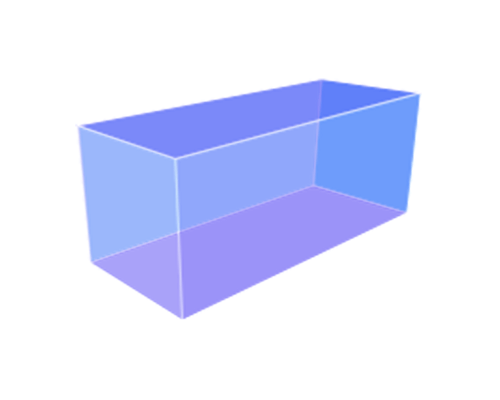 A rectangular prism is a solid geometric shape with six faces, all of which are rectangles. The opposite faces of the rectangular prism are parallel and equal in size. A rectangular prism is also called a rectangular cuboid or a rectangular parallelepiped.
A rectangular prism is a solid geometric shape with six faces, all of which are rectangles. The opposite faces of the rectangular prism are parallel and equal in size. A rectangular prism is also called a rectangular cuboid or a rectangular parallelepiped.
- Trapezoid
 A trapezoid, also known as a trapezium, is a four-sided polygon with two parallel sides and two non-parallel sides. It is a type of quadrilateral that has one pair of opposite sides parallel.
A trapezoid, also known as a trapezium, is a four-sided polygon with two parallel sides and two non-parallel sides. It is a type of quadrilateral that has one pair of opposite sides parallel.
- Parallelogram
 A parallelogram is a four-sided polygon with opposite sides that are parallel and equal in length. Its opposite sides have the same length and are parallel to each other.
A parallelogram is a four-sided polygon with opposite sides that are parallel and equal in length. Its opposite sides have the same length and are parallel to each other.
- Kite
 A kite is a quadrilateral shape that has two pairs of adjacent sides that are equal in length. It has one pair of opposite angles that are equal in measure. The other pair of opposite angles are also equal but not necessarily the same measure as the first pair.
A kite is a quadrilateral shape that has two pairs of adjacent sides that are equal in length. It has one pair of opposite angles that are equal in measure. The other pair of opposite angles are also equal but not necessarily the same measure as the first pair.
- Arrow
 An arrow is a graphical symbol that consists of a straight line with a pointed end, called an arrowhead. Arrows are commonly used to indicate direction or point to a specific object or location.
An arrow is a graphical symbol that consists of a straight line with a pointed end, called an arrowhead. Arrows are commonly used to indicate direction or point to a specific object or location.
- Crescent
 A crescent is a curved, moon-shaped object that appears in the sky during certain phases of the moon.
A crescent is a curved, moon-shaped object that appears in the sky during certain phases of the moon.
- Cross
 A cross is a geometric shape consisting of two perpendicular lines intersecting each other.
A cross is a geometric shape consisting of two perpendicular lines intersecting each other.
- Quadrilateral
 A quadrilateral is a two-dimensional geometric shape that has four sides, four vertices, and four angles. The total of the angles inside it always adds up to 360 degrees.
A quadrilateral is a two-dimensional geometric shape that has four sides, four vertices, and four angles. The total of the angles inside it always adds up to 360 degrees.
- Rhombus
 A rhombus is a four-sided geometric shape with equal sides and opposite angles that are equal to each other.
A rhombus is a four-sided geometric shape with equal sides and opposite angles that are equal to each other.
- Right Triangle
 A triangle with one angle measuring 90 degrees is known as a right triangle. The side opposite the right angle is the longest side, known as the hypotenuse.
A triangle with one angle measuring 90 degrees is known as a right triangle. The side opposite the right angle is the longest side, known as the hypotenuse.
- Ring
 A ring is a geometric shape that resembles a circular band. It has a round shape with a hollow center and is formed by two concentric circles.
A ring is a geometric shape that resembles a circular band. It has a round shape with a hollow center and is formed by two concentric circles.
- Semicircle
 A semicircle is a two-dimensional geometric shape that is formed by cutting a circle into two equal parts along a diameter, resulting in a half-circle.
A semicircle is a two-dimensional geometric shape that is formed by cutting a circle into two equal parts along a diameter, resulting in a half-circle.
- Star
 A star is a geometric shape made up of several lines connecting to form a symmetrical pattern.
A star is a geometric shape made up of several lines connecting to form a symmetrical pattern.
- Trapezium
 A trapezium is a four-sided, flat, geometric shape with two sides parallel and two sides non-parallel. It is also known as a trapezoid in some regions.
A trapezium is a four-sided, flat, geometric shape with two sides parallel and two sides non-parallel. It is also known as a trapezoid in some regions.
- Diamond
 A diamond is a colorless and brilliantly bright mineral that has a crystalline structure and is the hardest naturally occurring substance. It is a solid compound made up of crystalline carbon.
A diamond is a colorless and brilliantly bright mineral that has a crystalline structure and is the hardest naturally occurring substance. It is a solid compound made up of crystalline carbon.
- Hemisphere
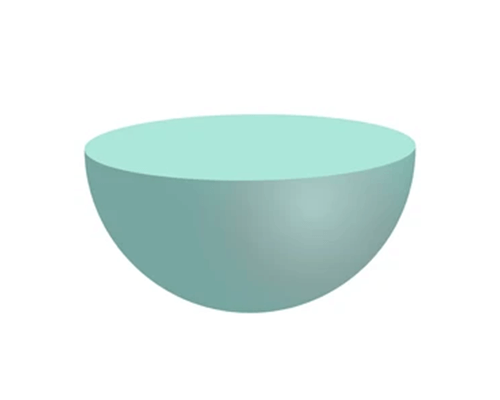 A hemisphere is a three-dimensional geometric shape that resembles half of a sphere, with a curved surface and a flat circular base.
A hemisphere is a three-dimensional geometric shape that resembles half of a sphere, with a curved surface and a flat circular base.
- Hexagonal Pyramid
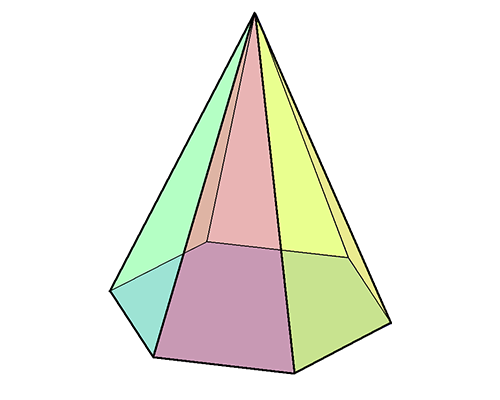 A hexagonal pyramid is a polyhedron with a hexagonal base and six triangular faces that meet at a single point above the base called the apex.
A hexagonal pyramid is a polyhedron with a hexagonal base and six triangular faces that meet at a single point above the base called the apex.
- Octahedron
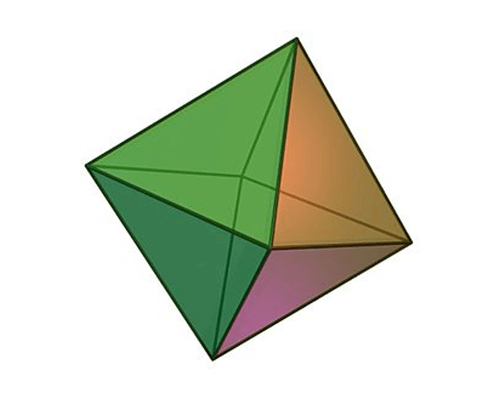 An octahedron is a polyhedron with eight faces, each of which is an equilateral triangle. It has 6 vertices and 12 edges.
An octahedron is a polyhedron with eight faces, each of which is an equilateral triangle. It has 6 vertices and 12 edges.
- Tetrahedron
 A tetrahedron is a geometric solid made up of four triangular faces. At each vertex, three of the triangular faces meet. It is the simplest type of polyhedron, with each face being an equilateral triangle.
A tetrahedron is a geometric solid made up of four triangular faces. At each vertex, three of the triangular faces meet. It is the simplest type of polyhedron, with each face being an equilateral triangle.
- Minus
 Minus is a mathematical symbol that represents subtraction, or taking away one number from another. It is commonly symbolized by the hyphen (-).
Minus is a mathematical symbol that represents subtraction, or taking away one number from another. It is commonly symbolized by the hyphen (-).
- Plus
 Plus sign (+) is a mathematical symbol used to indicate addition, representing the operation of combining two or more quantities or values. It is commonly used in arithmetic and algebra to represent the sum of numbers or variables.
Plus sign (+) is a mathematical symbol used to indicate addition, representing the operation of combining two or more quantities or values. It is commonly used in arithmetic and algebra to represent the sum of numbers or variables.
- Multiplication
 Multiplication is a basic arithmetic operation performed to determine the total value of several equal-sized groups or to find the product of two numbers. It is represented by an asterisk (*) or the letter "x."
Multiplication is a basic arithmetic operation performed to determine the total value of several equal-sized groups or to find the product of two numbers. It is represented by an asterisk (*) or the letter "x."
- Ellipse
 An ellipse is a closed curve in a plane, resembling a stretched-out circle, with two main axes of symmetry intersecting at its center.
An ellipse is a closed curve in a plane, resembling a stretched-out circle, with two main axes of symmetry intersecting at its center.
- Trefoil
 A trefoil is a shape that is composed of three overlapping loops. It is a common design element in various fields, including art, architecture, and nature. In mathematics, it is used to represent knots with three crossings.
A trefoil is a shape that is composed of three overlapping loops. It is a common design element in various fields, including art, architecture, and nature. In mathematics, it is used to represent knots with three crossings.
- Scalene Triangle
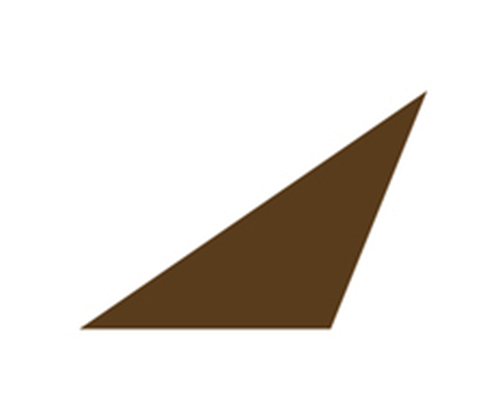 A scalene triangle is a polygon with three sides of varying lengths and three angles of different measures. It is a type of irregular triangle that does not have any sides or angles that are equal
A scalene triangle is a polygon with three sides of varying lengths and three angles of different measures. It is a type of irregular triangle that does not have any sides or angles that are equal
- Isosceles Trapezoid
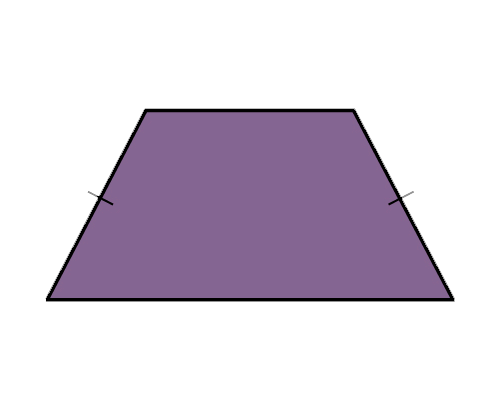 An isosceles triangle is a three-sided polygon with two equal-length sides and two equal angles opposite those sides. It has two pairs of congruent angles and one pair of parallel lines.
An isosceles triangle is a three-sided polygon with two equal-length sides and two equal angles opposite those sides. It has two pairs of congruent angles and one pair of parallel lines.
- Isosceles Triangle
 An isosceles triangle is a triangle with two sides of the same length and two angles opposite those sides that have the same measure. The third side, commonly referred to as the base, usually has a distinct length.
An isosceles triangle is a triangle with two sides of the same length and two angles opposite those sides that have the same measure. The third side, commonly referred to as the base, usually has a distinct length.
- Equilateral Triangle
 An equilateral triangle is a triangle in which all three sides are of equal length and all three angles are of equal measure, specifically 60 degrees. It is a regular polygon and one of the simplest geometric shapes.
An equilateral triangle is a triangle in which all three sides are of equal length and all three angles are of equal measure, specifically 60 degrees. It is a regular polygon and one of the simplest geometric shapes.
- Obtuse Triangle
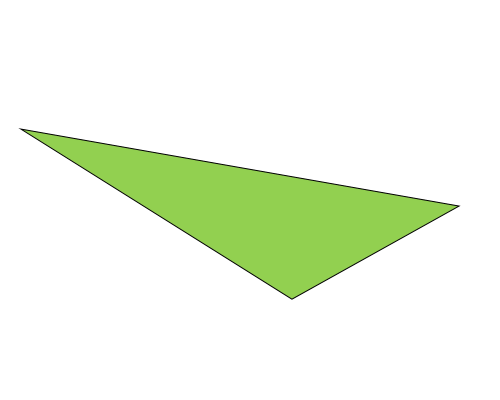 An obtuse triangle is a triangle with an angle greater than 90 degrees, also known as an obtuse angle. This type of triangle has two acute angles and one obtuse angle.
An obtuse triangle is a triangle with an angle greater than 90 degrees, also known as an obtuse angle. This type of triangle has two acute angles and one obtuse angle.
- Acute Triangle
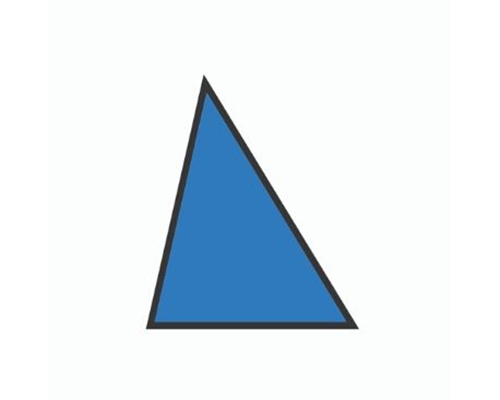 An acute triangle is a type of triangle where all three of its angles are acute angles, which means they measure less than 90 degrees. In other words, an acute triangle is a triangle with three acute angles.
An acute triangle is a type of triangle where all three of its angles are acute angles, which means they measure less than 90 degrees. In other words, an acute triangle is a triangle with three acute angles.
- Pentagram
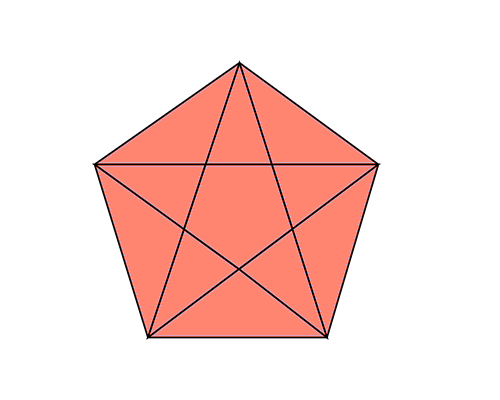 A pentagram is created by connecting five straight line segments in a continuous manner, resulting in a five-pointed star shape.
A pentagram is created by connecting five straight line segments in a continuous manner, resulting in a five-pointed star shape.
- Hexagram
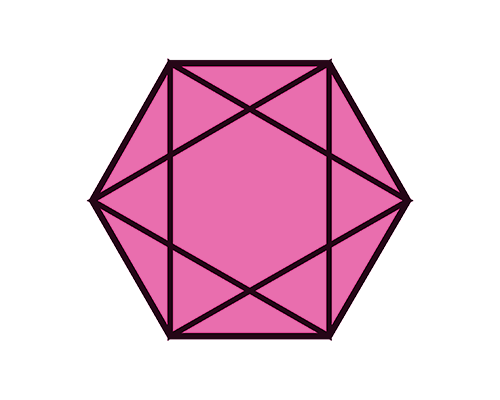 A hexagram is a six-pointed star, formed by two overlapping equilateral triangles.
A hexagram is a six-pointed star, formed by two overlapping equilateral triangles.
- Octagram
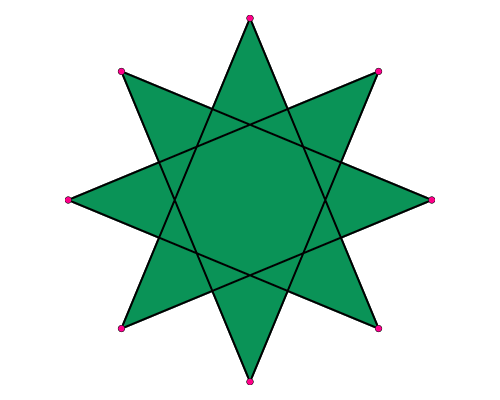 An octagram is a geometric figure consisting of an eight-pointed star formed by two squares that intersect at a 45-degree angle. It is also known as an eight-pointed star or an octangle.
An octagram is a geometric figure consisting of an eight-pointed star formed by two squares that intersect at a 45-degree angle. It is also known as an eight-pointed star or an octangle.
- Parabola
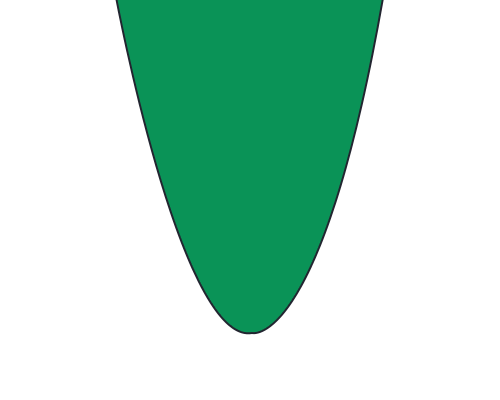 A parabola is a type of curved shape that results from cutting a cone by a plane that is parallel to one of its sides. It has a line of symmetry, called the axis of symmetry, which passes through the focus and the vertex.
A parabola is a type of curved shape that results from cutting a cone by a plane that is parallel to one of its sides. It has a line of symmetry, called the axis of symmetry, which passes through the focus and the vertex.
- Hyperbola
 A hyperbola is a type of conic section formed by the intersection of a plane with two separate but symmetrical cones. It is characterized by a curve that resembles two mirrored U-shapes opening in opposite directions.
A hyperbola is a type of conic section formed by the intersection of a plane with two separate but symmetrical cones. It is characterized by a curve that resembles two mirrored U-shapes opening in opposite directions.
- Dodecahedron
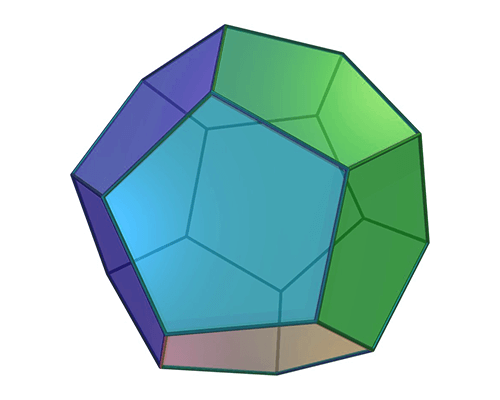 A dodecahedron is a polyhedron with twelve pentagonal faces, thirty edges, and twenty vertices in three dimensions. It is a regular polyhedron, meaning that all of its faces are congruent regular pentagons and all of its angles and edges have the same length.
A dodecahedron is a polyhedron with twelve pentagonal faces, thirty edges, and twenty vertices in three dimensions. It is a regular polyhedron, meaning that all of its faces are congruent regular pentagons and all of its angles and edges have the same length.
- Icosahedron
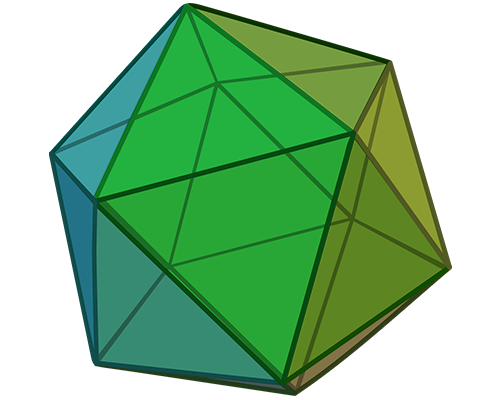 An icosahedron is a three-dimensional solid shape with 20 faces. It has 12 vertices, 30 edges, and each face of this three-dimensional shape is an equilateral triangle. It is a regular polyhedron, meaning that all its faces are congruent and all its edges have the same length.
An icosahedron is a three-dimensional solid shape with 20 faces. It has 12 vertices, 30 edges, and each face of this three-dimensional shape is an equilateral triangle. It is a regular polyhedron, meaning that all its faces are congruent and all its edges have the same length.
- Tetrahedron
 A tetrahedron is a three-dimensional geometric shape made up of four triangular faces, four vertices, and six edges. It is one of the five Platonic solids and has the fewest number of faces.
A tetrahedron is a three-dimensional geometric shape made up of four triangular faces, four vertices, and six edges. It is one of the five Platonic solids and has the fewest number of faces.
- Rhombicuboctahedron
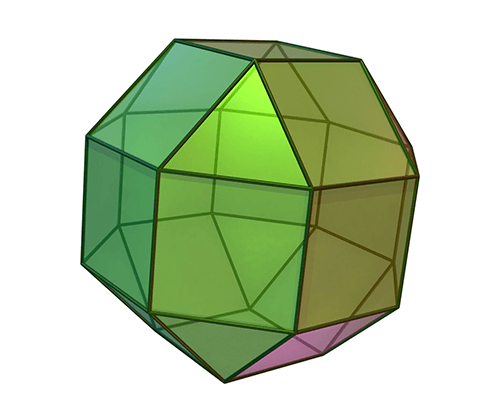 A rhombicuboctahedron is a polyhedron with 26 faces, consisting of 18 square faces and 8 triangular faces. The shape has a total of 24 vertices and 48 edges.
A rhombicuboctahedron is a polyhedron with 26 faces, consisting of 18 square faces and 8 triangular faces. The shape has a total of 24 vertices and 48 edges.









Leave a reply